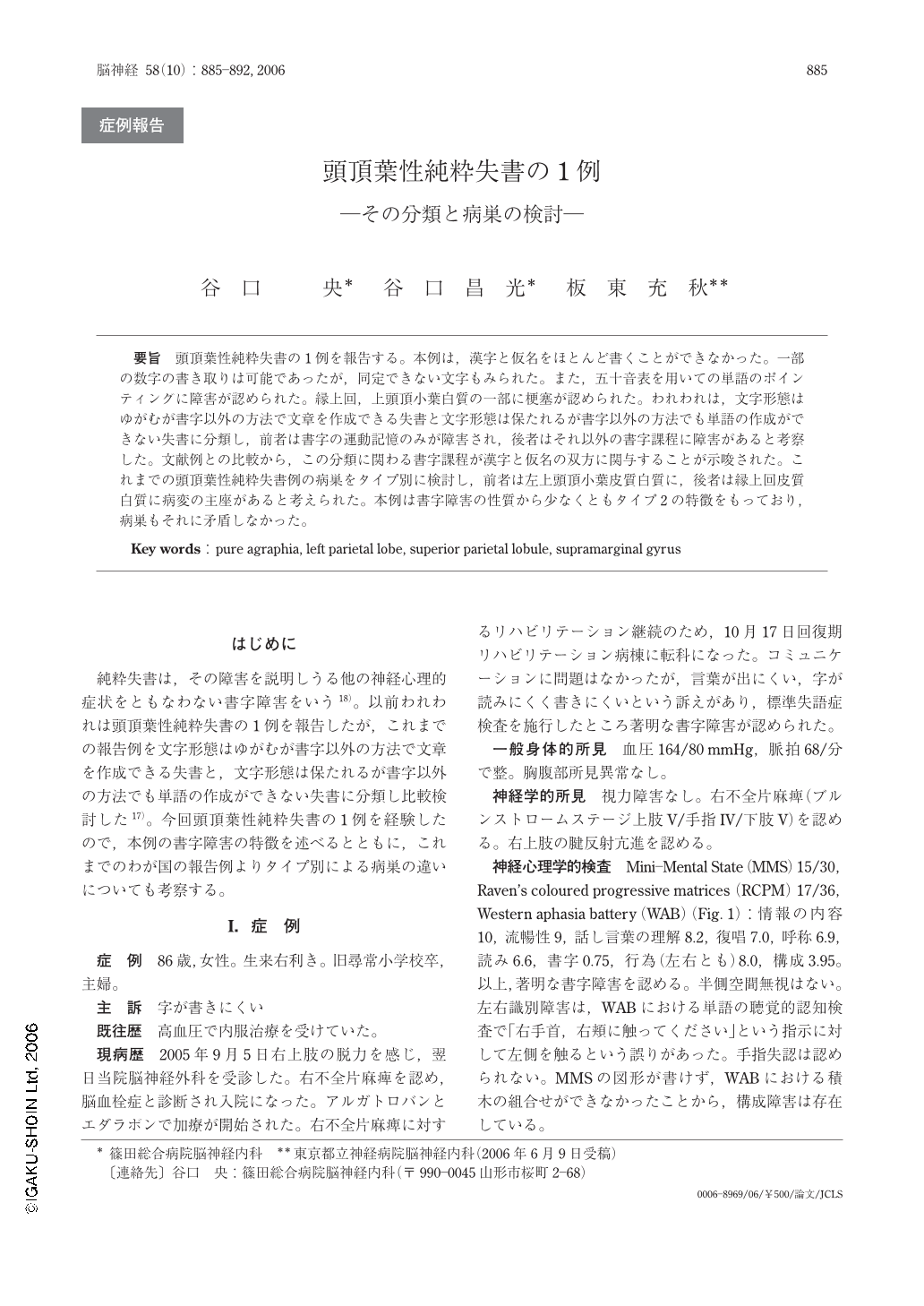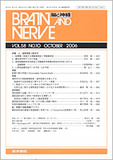Japanese
English
- 有料閲覧
- Abstract 文献概要
- 1ページ目 Look Inside
- 参考文献 Reference
要旨 頭頂葉性純粋失書の1例を報告する。本例は,漢字と仮名をほとんど書くことができなかった。一部の数字の書き取りは可能であったが,同定できない文字もみられた。また,五十音表を用いての単語のポインティングに障害が認められた。縁上回,上頭頂小葉白質の一部に梗塞が認められた。われわれは,文字形態はゆがむが書字以外の方法で文章を作成できる失書と文字形態は保たれるが書字以外の方法でも単語の作成ができない失書に分類し,前者は書字の運動記憶のみが障害され,後者はそれ以外の書字課程に障害があると考察した。文献例との比較から,この分類に関わる書字課程が漢字と仮名の双方に関与することが示唆された。これまでの頭頂葉性純粋失書例の病巣をタイプ別に検討し,前者は左上頭頂小葉皮質白質に,後者は縁上回皮質白質に病変の主座があると考えられた。本例は書字障害の性質から少なくともタイプ2の特徴をもっており,病巣もそれに矛盾しなかった。
We reported a case of an 86-year old woman with pure agraphia due to the left parietal lobe infarction.
The characteristics of agraphia were as follows. Most errors in Kana and Kanji writing to dictation and copying were no response. She was able to write only numerals from 1 to 12 precisely. Most errors in numerals were substitution. One unrecognizable numeral was found. She succeeded in pointing to nine among ten single Kana letter named by the examiner with the systematic table of the Japanese syllabary, but missed in pointing to Kana words. It took more time for the patient to point to single Kana letter than the control. Magnetic resonance imaging showed a cerebral infarction in the left parietal lobe which included a part of superior parietal lobule and supramarginal gyrus.
We classified pure agraphia with parietal lobe infarction into two types in our previous report. In one type (type 1), letters in writing are poorly formed, but the ability to make words with the methods other than writing are reserved. The only deficit of graphic motor pattern could cause Type 1 agraphia. In another type (type 2), letters in writing were well-formed, but spelling with anagram or typing was disturbed. The deficits of writing process other than graphic motor pattern could cause Type 2 agraphia. This typing seems to be effective not only in Kana but also in Kanji.
In this report, we investigated the differences of lesion between two types out of some references. Type1 agraphia seems related to lesion of left superior parietal lobule, while Type 2 agraphia seems related to lesion of left supramarginal gyrus.
This case had the features of type 2 agraphia at least, and the compatible lesions.

Copyright © 2006, Igaku-Shoin Ltd. All rights reserved.


